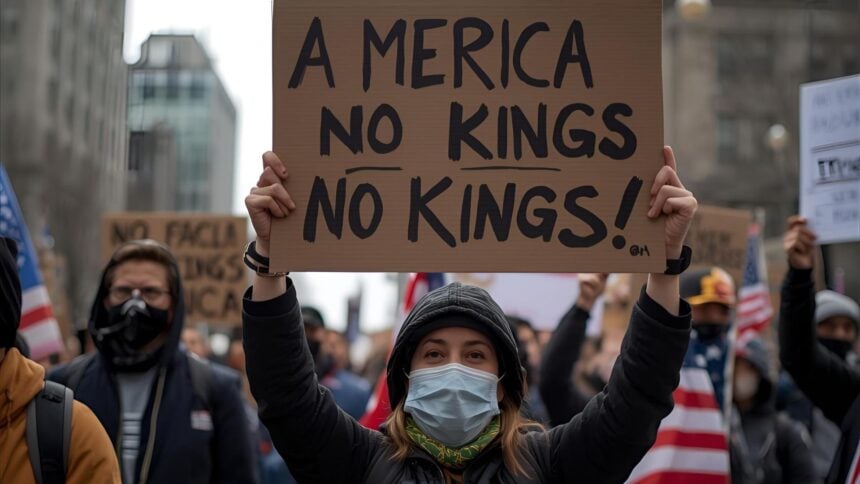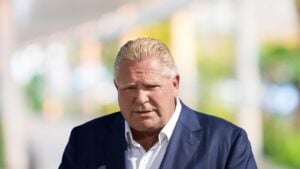Crowds filled streets from New York to Seattle on Saturday as the nationwide No Kings protests targeted President Donald Trump’s use of power.
Organizers said the coordinated demonstrations numbered more than 2,600 events across all 50 states and drew millions, making it one of the largest mobilizations of the year.
Early police and media reports described largely peaceful gatherings punctuated by festive signs and constitutional themes.
Why they came out varied by place, but the common thread was an objection to what protesters called creeping authoritarianism.
Marchers pointed to domestic troop deployments in liberal cities, immigration raids and deportations, and efforts to target perceived political foes through the machinery of government.
Civil-liberties groups that helped coordinate the day framed the message around safeguarding institutions, not partisanship. Turnout was visible in major metros and college towns.
In Chicago, organizers said about 250,000 people gathered in Grant Park before marching through downtown, a local peak that echoed big-city crowds elsewhere.
In Washington, D.C., rallies clustered near federal buildings. In Florida, demonstrators gathered near Mar-a-Lago as Trump spent the weekend at his private club.
The scale matched a summer wave of activism and reflects a movement that has evolved from spontaneous marches to coordinated logistics and de-escalation training.
Participants frequently cited immigration as a catalyst, pointing to stepped-up enforcement tactics that have swept up long-settled families and asylum seekers.
Others mentioned attempts to concentrate power in the executive branch and the politicization of federal agencies.
Several attendees said headline-grabbing moves on trade, media and the central bank contributed to a climate that felt punitive and unpredictable.
Some pointed to pocketbook pressures after Trump hits home goods with new tariffs, while others referenced the president’s running clash with Powell over interest rates.
Outside the economic sphere, a subset of marchers said they worry about the treatment of critics and watchdogs. That sentiment has sharpened as Congress remains polarized and high-stakes negotiations periodically falter.
The tone of Saturday’s marches, many said, was a hedge against political whiplash: show up now to set boundaries before the next crisis.
Recent headlines about a potential fiscal standoff, including when White House talks collapse, added urgency for some.
Organizers emphasized nonviolence and broad participation, noting families, veterans, union members and faith groups among the crowds.
The coalition behind No Kings includes civil-rights and labor organizations that mounted training sessions and neighborhood canvasses in the lead-up.
The American Civil Liberties Union ran live updates and pointed supporters to local events, underscoring a decentralized strategy that aims to outlast a single news cycle.
Republican officials criticized the rallies as performative, while supporters framed them as a pressure campaign to deter what they see as rule-bending from the White House.
Several GOP figures argued the demonstrations ignored policy successes and economic resilience. Demonstrators countered that the point was less about individual policies than process and precedent.
Their signs, many reading “No Kings,” captured a view that constitutional guardrails should not depend on who holds the Resolute Desk.
Coverage from multiple outlets suggested the day passed without widespread arrests or major disruptions.
Trade actions are filtering into retail categories and housing inputs, as documented when Trump hits home goods with new tariffs.
Foreign policy stances that ripple into energy flows and inflation expectations remain in the background too, a reminder of earlier episodes when the White House backs new sanctions.
While none of that moved markets immediately this weekend, the political temperature is a factor that boards and portfolio managers will keep in their risk memos as the policy calendar fills.
The campaign’s site and allied groups are already steering volunteers into court-watching, voter education, and local advocacy.
Whether the crowds change policy is uncertain, but the message resonated across geography and demographics.
If the movement sustains Saturday’s momentum, its next test will be translating presence in the streets into pressure inside committee rooms and court filings.



















